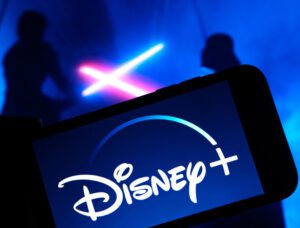 Custom content was all the rage even as early as 2007, when entrepreneur and actor RJ Williams founded celebrity and lifestyle site Young Hollywood.
Custom content was all the rage even as early as 2007, when entrepreneur and actor RJ Williams founded celebrity and lifestyle site Young Hollywood.
The millennial-focused publisher claims it averages 150 million monthly video views across desktop, mobile, OTT and social today.
Young Hollywood evolved from content partnerships with portals like AOL, Yahoo and YouTube, to its latest iteration – producing original content for over-the-top channels on platforms like Apple TV and Roku via a studio in the Beverly Hills Four Seasons. This transition has led to greater demand for better ad delivery across different devices.
“Our whole audience and focus is millennials and curating what’s cool,” Williams said. “If there’s copy or creative running that’s way off target, we need a way to go in and block that to make sure there isn’t an annoying ad that will turn off our audience.”
While programmatic media sellers want to ensure demand partners have adequate access to their supply, they also need to make sure the ads served are compatible with a range of device types and content.
If file types don’t match a platform or device’s specifications, it can disrupt ad delivery (and ultimately video playback), which leads to pixelation or fails to render an asset (or just times out).
Young Hollywood uses a creative feature Tremor Video just rolled out to seller platform users, which is designed to mitigate some of these concerns and ensure ads don’t detract from the audience experience.
“We offer ways for publishers to see what kinds of bit rates are they getting on supply,” said Craig Berlingo, VP of product, publisher platforms for Tremor. “If someone’s watching on a Roku, having pixelated media is completely unacceptable, so we offer the ability to say, ‘Here’s all the demand sources, and what’s the quality of the creative?’”
Quality of creative might include video content file type, player size, flash vs. MP4 and video duration.
Tremor’s video creative tool also lets publishers pre-play the video file, and accept or reject bid requests based on the asset’s relevancy to their content (or its advertisers’ brand safety requests).
“We give as much information to the seller as we can so they know who the DSP/seat holder was, the creative ID [and a way to] actually play the video ad and make sure it feels right for their audience,” Berlingo added.
As video ad quality becomes more of an imperative, publishers are looking for tools that offer diagnostics and deeper analytics about how their supply is represented to buyers: e.g., are assets descriptive enough so the right buyers can access them or are the video files responsive and adapt to the aspect ratio of a page or channel?
 Berlingo expects the fastest adoption for the tool will be in direct deals or private marketplace instances, since publishers like Young Hollywood want to vet which creative is most successful.
Berlingo expects the fastest adoption for the tool will be in direct deals or private marketplace instances, since publishers like Young Hollywood want to vet which creative is most successful.
“With the open auction, it’s just a different focus,” he explained. “You have access to a lot more demand and need to be able to sort through that and to see accurately what demand is coming through quickly. It’s a prospecting tool, and depending on which advertisers find your supply interesting and what they’re willing to pay, you can reach out and upgrade that relationship.”
Young Hollywood has historically refrained from display, monetizing via pre-roll or brand sponsorships instead.
As it continues to expand long-form programming, it’s weighing the impact of the ad load on its viewers. For a half-hour segment, it would typically run one pre-roll to with three commercial ad breaks.
The maturation of programmatic means advertisers want more direct deals and PMPs because of the scarcity of premium content.
“We got one request yesterday from a major advertiser who was buying us on the open auction and who wanted to explore setting up a PMP deal,” Williams said. “I think brands are taking more initiative, counter to where you’d traditionally have a direct sales force knocking down doors trying to get people to buy your stuff.”
A year ago, when Young Hollywood first dove into programmatic, it was much more about discovery and the open auction.
Now when advertisers find a demo that tends to gravitate toward certain types of content on Hulu and Roku, for example, “they want to own as much real estate as they can because it’s so scarce,” Williams said.
“That’s been the great thing about the evolution of programmatic in video,” he added. “There’s this incorrect sentiment that it’s all leftovers and remnant at bad prices, but it’s been completely opposite for us. I think people are realizing programmatic can be a more efficient way to buy media.”
“No, you won’t be able to buy us for $8 CPMs,” he added. “We’d rather leave that money on the table. But you’re seeing brands paying top dollar [YH claims it commands $75-$100 CPMs in certain PMP instances] if there’s quality audience and placement.”













